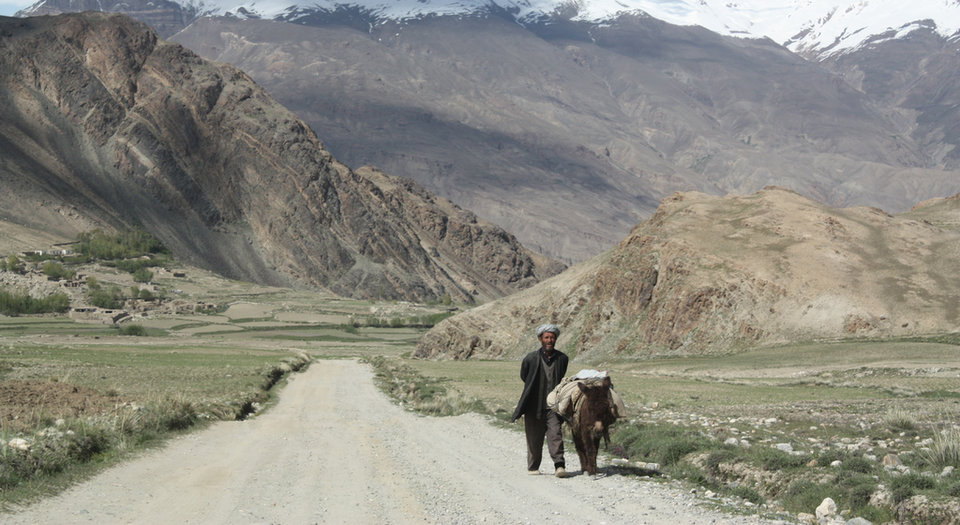
Regional focus
Taliban control: Afghanistan’s elusive $1tn lithium jackpot
Taliban control over Afghanistan has sent ripples of shock through the world, and sparked reports of a lithium deposit worth $1tn that the group now has control over. Scarlett Evans investigates the validity of these claims, and asks how desperate our need for lithium is.
I
n 2007, the US Geological Survey(USGS) conducted a study of Afghanistan’s natural resources, reporting that the country was a potential hub for iron, copper, gold, cobalt, and lithium. Then, in 2010, a leaked White House memo upped the ante, labelling the country the “Saudi Arabia” of lithium, housing deposits of the green energy metal that it estimated was worth around $1tn.
Since then, the country has been hypothesised to be a golden ticket to the renewable revolution – yet one that has remained unreachable due to consistent political instability and turmoil. Now that the Taliban have seized control, reports abound bemoaning their de facto ownership of this abundant and increasingly coveted deposit. Yet scratch a little below the surface and the fabled riches are not as certain as they may initially seem.
A thorough and adequate survey of the region in question has not, in fact, been undertaken, and there is little tangible evidence that the mineral is even present. Fears over Taliban control over this hypothetical deposit do, however, open up wider questions about the state of mining in the country now that it has left government hands, and what the future may hold for global lithium supply chains.
Where is the lithium?
Once upon a time, an abundant lithium source would have paved the way for the country’s economic independence and when the White House memo was leaked, both the US and Afghanistan Governments expressed optimism about the future of the industry. Yet on closer inspection, the very presence of the deposit is thrown into doubt.
Rick Valenta, a professor at the University of Queensland’s Sustainable Minerals Institute, says that the 2007 survey only referenced lithium once, and the assumed presence of lithium initially came only from the confirmed presence of boron.
“The report talks about boron in salt lakes,” he says. “And I guess the assumption there is that it has a similar environment of formation to lithium, so people made the intellectual leap to say there was perhaps lithium potential.”
A follow-up drill programme was commissioned by the USGS in 2010, which attempted to more accurately identify mineral deposits in the region. Valenta says this returned similarly lukewarm results.
What they basically said was they observed a low lithium concentration in pore waters … It wasn't just a near miss, it was way off.
“What they basically said was they observed a low lithium concentration in pore waters, which did not suggest the presence of viable lithium brine resources,” he says. “What they found was a range of lithium levels about three orders of magnitude less than the lithium concentrations in the springs and brines in South America. So it wasn't just a near miss, it was way off.”
While this by no means entirely disproves that there is any lithium there, it certainly gives pause to the idea that the Taliban is now sitting on a treasure trove. Extensive further research would be needed to confirm whether projects in the area would be viable – research that is however, impossible for the time being.
The only nation that seems at all placed to pursue such an undertaking is China, and speculation is swirling in the industry as to whether it would take the plunge.
A role for China?
Wading into the quagmire that is Afghanistan’s current geopolitical situation is a daunting task, and one that many nations are unlikely to try. China is the most likely option given that it already has operations in the country – the long-delayed Mes Aynak copper mine.
“In the exploration fraternity, there’s been a sentiment expressed by a few people that this is the sort of jurisdiction where it may be possible for a sovereign country like China to gain access to some of the exploration targets that a Western-listed company would find very hard to access,” says Valenta.
Obstacles certainly remain to the country harnessing much of its mineral deposits. Political turmoil aside, Afghanistan is land-locked and water scarce, making it an unwelcome site for mineral development. Establishing and operating mining sites would be incredibly expensive and, according to Cameron Perks, lithium specialist at Benchmark Minerals, is likely not an option even China would see as viable.
There are much better places to go with more political and geological certainty.
“A one sentence answer to whether China is going to fund lithium mining in Afghanistan is that there are much better places to go with more political and geological certainty,” he says.
“Building a mine requires substantial amounts of money and time, and that’s before taking into account the fact that this is a landlocked country that has an unpredictable political situation.”
In addition to this, the growing consumer demand for sustainable supply chains means any operations under the Taliban may struggle to find a market anyway.
“A lot of the old deposits in Afghanistan were found by the Soviets, and it would take a lot of work to really bring them up to current modern day standards,” Perks adds.
“There’s also an increasing emphasis on ESG and sustainability – particularly minerals related to the electric vehicle (EV) supply chain. In Afghanistan, there are social and governance issues, as well as transparency issues that would make it really hard to know what's really going on in that supply chain.”
Regardless of whether China is intending to invest or not, we will likely not know the future of the country’s minerals and resources industry until the dust has settled from the Taliban’s recent take over.
Do we even need this lithium?
In May, the International Energy Agency published a report estimating that around 1,000 GWh of battery manufacturing capacity is needed in 2025, while global annual battery production may be required to reach 1,500 GWh by 2030 for “all electric vehicles combined”. With this information in mind, it may be fair to assume that a large lithium deposit would tip the scales as we seek to boost battery production. Yet Perks says this isn’t necessarily the case.
“If there was just some massive massive deposit lying in wait in Afghanistan, it would firstly take a lot of work to prove that it’s there and – in the context of the massive growth in demand from EVs that we expect and are already seeing – it may not even make a huge difference to the global supply chain anyway,” he says.
“Lithium is plentiful in the ground – there are large deposits in Australia, Africa, South America, and North America, including the US and Canada. But finding somewhere that’s economical for extracting it can be hard.
“It depends on whether you have the right size deposit, right infrastructure, right grades, the expertise, the right partners, whether you have the equipment, and whether you’re doing it for the right reasons. All those things will have to come together in Afghanistan. It’s not impossible, but it’s yet to be seen that the deposits are even as good as they have been said they are.”
Similarly, Valenta says that finding lithium deposits is not actually the issue – it’s finding a way to extract and process the lithium available in the least environmentally damaging way that will prove a challenge.
We're not going to run out of lithium. The question is more in prioritising how we select the lithium available to us.
“We're not going to run out of lithium,” he says. “The question is more in prioritising how we select the lithium available to us which will create the least local environmental, biodiversity, or regulatory impact.”
One thing is for sure – we need lithium as the global economy transitions to a renewable future, and finding environmentally sound ways of sourcing our existing deposits is crucial for the industry’s development.
Yet wading into the geopolitical instability of Afghanistan seems highly unnecessary and potentially foolhardy. While the Taliban’s control certainly raises questions about the future of supply chains in the country, the fear over losing out on a lithium bounty seems unfounded, and we need not fret that it puts our EV future in jeopardy.
// Main image: ISHKASHIM, AFGHANISTAN - MAY 28: Man and his donkey walk along newly constructed road on 28th May, 2010, Ishkashim, Afghanistan. Credit:Maximum Exposure PR / Shutterstock.com
